A detailed take on Moto's new affordable 5G phone
Off late, 5G has become quite a talking point in western markets and Asian countries like China and South Korea. Smartphone makers have been emphasising on 5G support as a key factor while marketing their devices. However, in a country like India, where 5G networks aren’t available at the moment, there is little incentive for buyers to eye phones solely for their 5G chops. Enter, the Moto G 5G, which is currently being heralded as the cheapest 5G-capable smartphone in India with a starting price of Rs 20,999. The phone is also the first in the Indian market to ship with the all-new Snapdragon 750G SoC which coupled with its near-stock Android roots, make it an enticing option, to say the least. But, should you cave in and buy the phone knowing fully well that 5G is ways away? Stick around to see how successful the Moto 5G has been in this attempt.

Verdict
Excluding 5G capabilities as a deciding factor, the Motorola 5G is an impressive phone for its price. It has a fast chipset, a clean Android experience, and great camera performance. Could there have been improvements? Of course. The battery charging speeds are not great and the design language doesn’t leave a lasting impression. But other than that, the Moto G 5G is one of the easiest devices to recommend in the mid-range category.
Design and display
- Display: 6.7-inch Super AMOLED
- Resolution: FHD+ (2,400 × 1,080)
- Refresh rate: 60Hz
- SIM: Dual nano
- Connectivity: USB Type-C
The Moto G 5G’s outer aesthetics remain mostly unchanged from the previous Moto G phones, which is to say that I’m not really a fan. Motorola has increased the thickness of the Moto G 5G by nearly 1cm when compared to previous offerings from the company’s stables. Rest assured, the meaty girth of the handset is clearly felt when gripping the phone. The phone also weighs in at 212g, making it one of the heavier handsets out there. Interestingly, the phone is packing in a fairly standard 5,000mAh cell and not an outrageous 6,000 or even 7,000mAh capacity, as we have seen in a couple of other devices. Thankfully, the polished polycarbonate construction and sloping rails lend the Moto 5G a comfortable in-hand feel, though I feel that Motorola could’ve shaved off some weight from its latest contender.
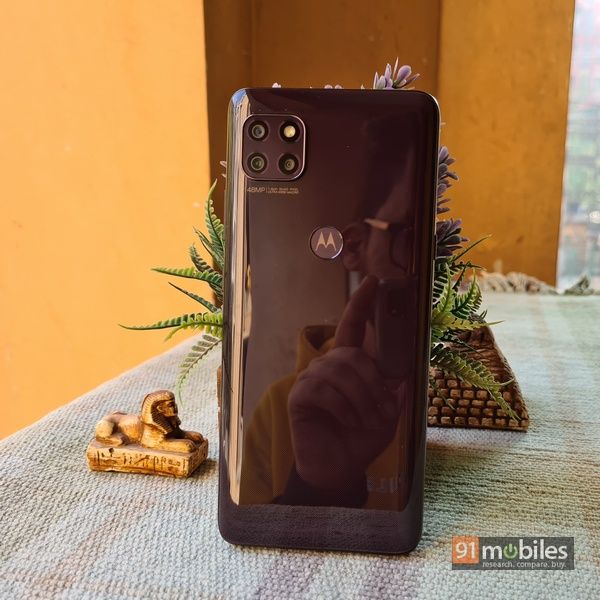
Moving on, the build of the phone is solid and there’s no flex anywhere on the chassis. The signature Motorola dimple can be found towards the back, which doubles up as a fingerprint reader. Moto G9’s square camera module has been ported to the Moto G 5G, although the placement is slightly off-centre this time around. The review unit sent to me came in a Volcanic Grey hue, but interested folks can also cop the phone with a Silver finish. That said, I can say with absolute certainty that there is nothing volcanic or grey about the finish on my loaner model and it actually resembles a dark maroonish colour. Aesthetically, it may not be as easy on the eye as Realme 7 Pro’s (review) matte-like finish, but it doesn’t look too shabby either. Either way, you would likely want to slap on the clear silicone case, as the phone happens to be a big fingerprint magnet. On the bottom of the phone, you will find a 3.5mm headphone jack and a Type-C port along with the speaker grille. The Google Assistant button, standard on many Moto phones, has a textured finish to it, as does the power button. The volume rockers sit above the latter on the right side slightly higher than I would’ve wanted while on the left side is the dual nano-SIM + microSD slot. Overall, the Moto G 5G compliments its rather bland design with a reasonably good in-hand feel.
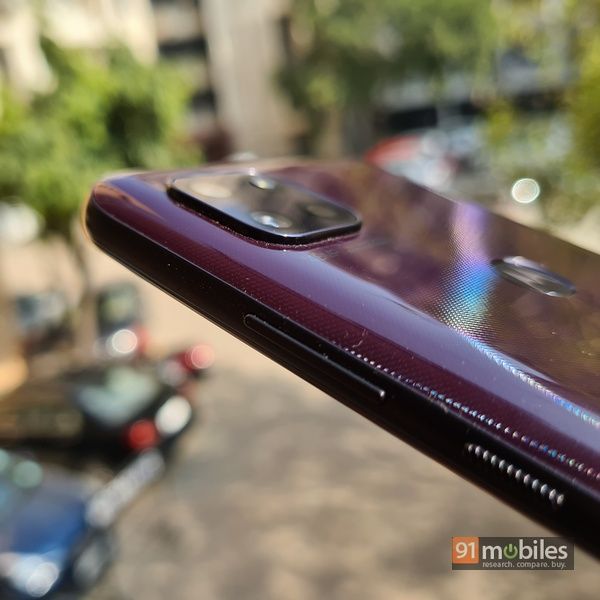
The front of the phone is dominated by a 6.7-inch FHD+ display of the LCD variety. A punch hole is present at the top encompassing the selfie shooter. There is a bit of backlight bleeding around the cutout and its size was also a tad big for my liking. Even so, on the whole, the panel was quite nice for viewing content. It also supports HDR10+ and WideVine L1 certification for viewing HD content on streaming services. The contrast levels were decent enough but there was a slight saturation of colours. Furthermore, while not the brightest, the 450 nits display did a fairly decent job outdoors in sunlight with legibility not being an issue. The viewing angles on the Moto G 5G were good enough for an LCD display too.
Unfortunately, as a tech enthusiast, I believe I have a moral obligation to gripe about the low 60Hz refresh rate on offer with the Moto G 5G’s panel. As it stands, the market is ripe with devices like the POCO X3 (review), a phone that costs less and offers a 120Hz screen refresh rate LCD panel. This begs the question – why omit a high-refresh rate screen on the Moto G 5G? Suffice it to say, while the display on the Moto G 5G is good, there’s certainly room for improvement here.
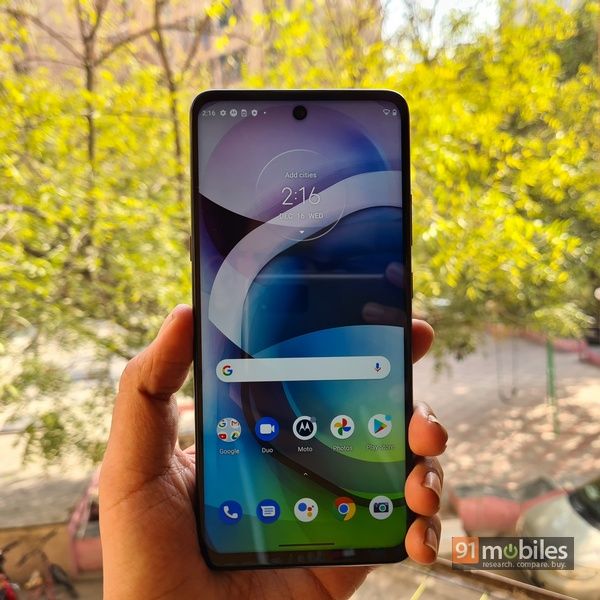
Cameras
- Rear cameras: 48MP main, 8MP wide-angle, and 2MP macro
- Front cameras: 16MP
- Video shooting: 4K @ 30fps, 1080p @ 30/60/120fps, 720 @ 30/60/120/240fps
Moto G 5G’s 48MP primary sensor does most of the heavy lifting on the device’s triple-camera layout. Other lenses on the Moto G 5G comprise an 8MP ultra-wide sensor and a 2MP macro shooter. Notably, the relatively cheaper Moto G9 also shipped with the same assortment of lenses. However, I feel that the Moto G 5G’s new and superior ISP which comes bundled with a Snapdragon 750G SoC, makes a world of difference. In daylight, the Moto G 5G can do no wrong for a phone of its price. Saturation levels are kept mostly under control with realistic colour tones seeping into shots. Dynamic range is also balanced along with exposure levels. When the sun is shining directly behind a subject, highlights and shadows can take a hit but you can turn on auto-HDR for better shots. Detailing is quite good in regular pixel binned shots but you always have the option of getting more detail with the UHD 48MP shots.
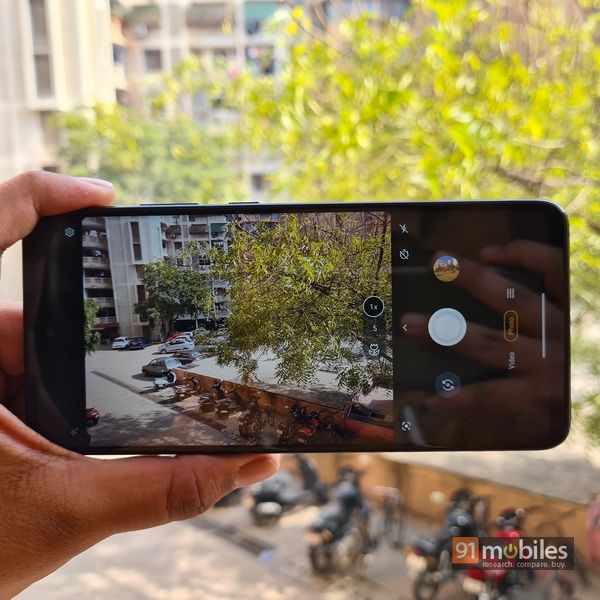
The ultra-wide sensor is good enough to fit substantially more in your frame but it needs a lot of lighting to get usable details. It does lean towards a warmer look in photos and the colours are slightly dull as compared to the primary shooter, but overall the ultra-wide takes some decent shots. Then there is the usual macro sensor, seen in a ton of phones off late. I still haven’t seen people doing macro photography with their cameras, but if you want to, the Moto G 5G has a decent sensor to do so. I mean the 2MP resolution is not going to pump out a lot of details but at least the colours are accurate and focusing is quick. Obviously, the standard photos are pixel-binned 12MP shots but there always the option for UHD 48MP shots.
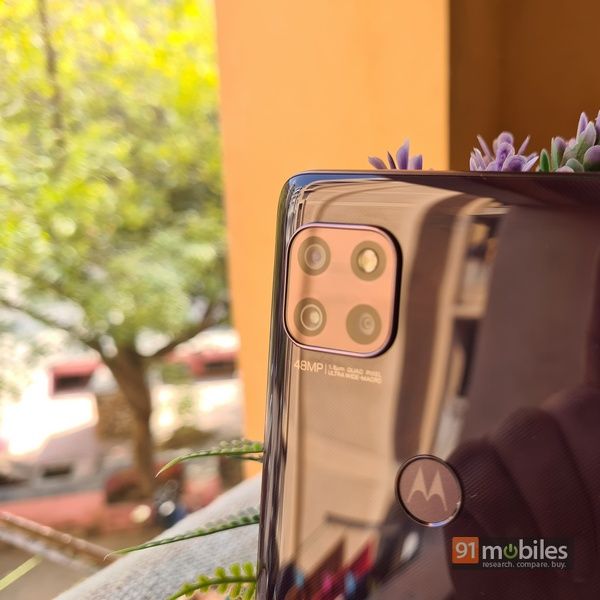
Nighttime shots on the Moto G 5G have me impressed. My colleague’s review of the Moto E7 Plus (review) also stressed how good Motorola’s computational photography is in low-light situations. The dedicated Night Mode can be turned on by a single tap after the sensor detects a lack of light in the viewfinder. Even without the night mode shots are more detailed than what I have come to see on Rs 20,000 devices. Highlights and shadows of objects even in faint street lights are pronounced with background noise smoothened out. With the Night Mode on the sensor injects a lot of exposure in shots bringing out details that were pretty much invisible in the shot without its usage. That being said, the photos do look a lot like oil pastel paintings, which takes out a sense of realism in the shot. They will, however, be very much apt for posting on social media. On the video side of things, the Moto G 5G happens to have 4K recording capabilities but only at 30fps while FHD can go up to 120fps and super slow-mo recordings can be shot at 240fps at 720p quality.
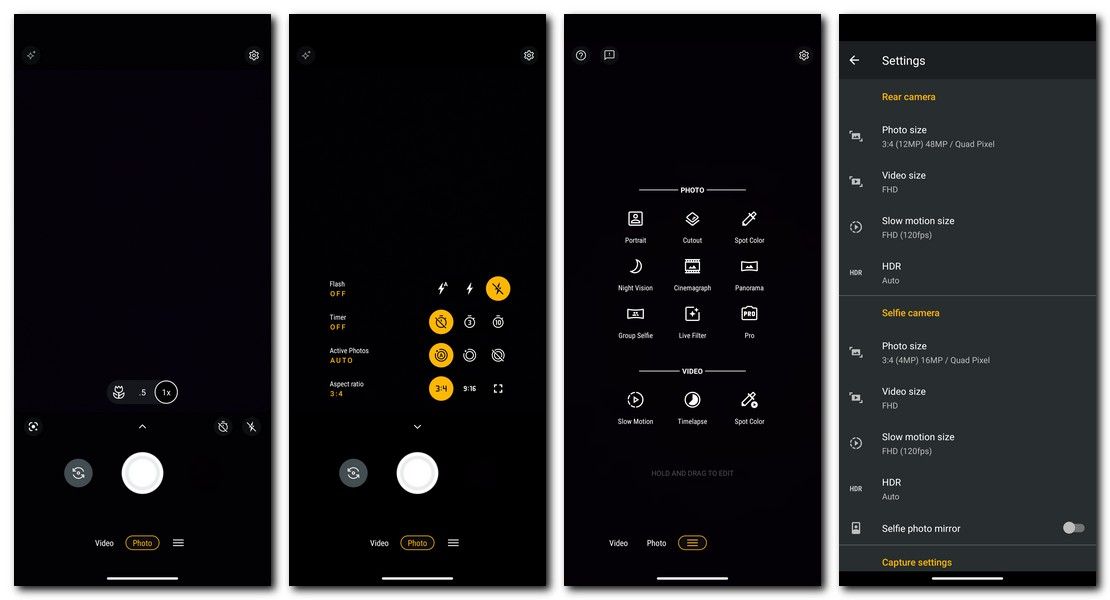
As for the front of the phone, the Moto G 5G has a 16MP selfie shooter that can get very good selfies in bright lighting. Skin tones, which is something I judge a front camera heavily on, match in real life. There is some amount of oversharpening of facial details, which is quite standard on Moto devices. Otherwise, contrast levels, exposure, and portrait shots work well on the front camera. At night the shots take a hit in detailing and there is also a lot of noise but the Night Mode will again remedy the situation. The camera experience on the Moto G 5G is quite good, if not one of the best in the segments.
Performance and software
- Chipset: Snapdragon 750G
- RAM: 6GB
- Storage: 128GB, expandable to 1TB
- Software: MyUX with Android 10
The Qualcomm Snapdragon 750G SoC has arrived for the first time in the Indian market thanks to the Moto G 5G. The chipset is placed squarely between the higher end 765G and the recently released Snapdragon 732G SoC. Based on an 8nm manufacturing process, the 750G is definitely a power-efficient option and at the same time a proper mid-range processing powerhouse. The benchmarks on the device prove that it can hold out against devices with the 765G. On Geekbench the Moto G 5G had scores of 653 and 1,997 for single-core and multi-core respectively while the OnePlus Nord (review), with the Snapdragon 765G has, 617 and 1,974 respectively. The Antutu scores for both devices also remain the same with the Moto G 5G scoring 326,394 and the Nord having a score of 331,193. It is apparent that both devices perform almost the same and it is impressive that the Moto G 5G manages this at a price that is about Rs 5,000 lower. Real-world usage correlates with the benchmarking scores as well wherein the usual multitasking and switching between heavy apps is carried out effortlessly. The 6GB RAM and 128GB of internal storage are ample for most users. Activities such as streaming on YouTube or scrolling through your Instagram feed or browsing on multiple Chrome tabs, will not be a problem on the phone. Heavy gaming will also not be an issue provided you don’t crank up the settings. On Call of Duty Mobile, I had kept graphics settings at High while the frame rate was also set at High. The resulting gameplay was mostly lag-free with the occasional frame drops after the one-hour mark. Light games such as Temple Run or Angry Birds or Candy Crush will be running flawlessly.

Other features on the phone include a capacitive fingerprint sensor for biometric authentication that unlocks the phone in a jiffy and is quite reliable. The Moto G 5G also ships with face authentication which requires lesser effort. And, while we’re on the subject of performance, let’s also address the phone’s 5G capabilities. India’s roadmap for 5G is a bit murky with telecom providers not giving out exact timelines for 5G roll-out with the exception of Jio. Regardless, the transition from 4G to 5G is likely going to take more than a year or so and in the interim, smartphones with better 5G modems should be coming to India. Long story short, I wouldn’t recommend buying the Moto G 5G just on the basis of its 5G capabilities. As for LTE, I had tested the device on a Jio connection in Noida, and did not face any issues of call drops. Microphone and speaker quality were on par with other smartphones in a similar price range.
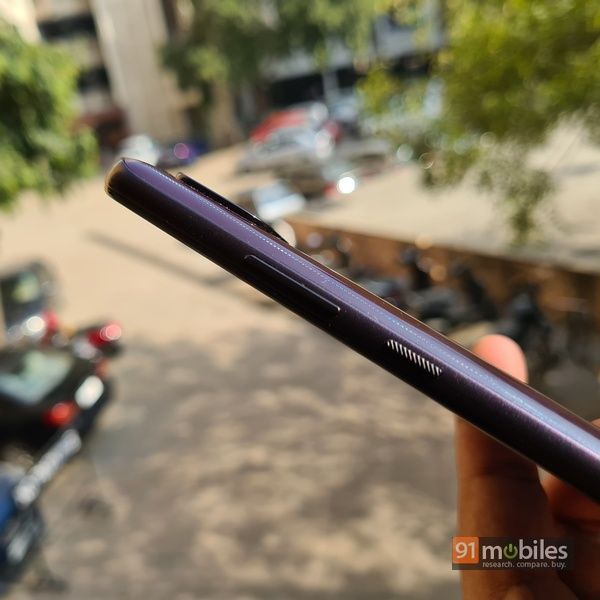
The choice of software on Motorola devices has always been satisfactory. MyUX’s clean, stock Android nature ensures the Moto G 5G’s chipset is not overburdened. Animations are smooth, fluid and, in general, the UI is very responsive. Out of the box the Moto G 5G comes with Android 10, so do expect support for Android 11 but there is no guarantee of a major update after that since the phone is not part of Google’s Android One program. This is a bummer since a lot of phones in the mid-range category are now shipping with Android 11. To its credit, there is little to no bloatware installed on the Moto G, which is a relief. There are also no over-the-top themes clogging the phone’s processing bandwidth. That being said, icons, accents, and more can be customised to your liking. There are no ads baked into the MyUX’s settings menu or spammy notifications either. As far as software experience goes, Motorola’s MyUX is the closest you can get to Google’s own stock Android solution present on Pixel phones.

Battery
- Battery: 5,000mAh
- Charging speeds: 20W Fast Charge
- 0-50 percent: 45 minutes
Final Verdict
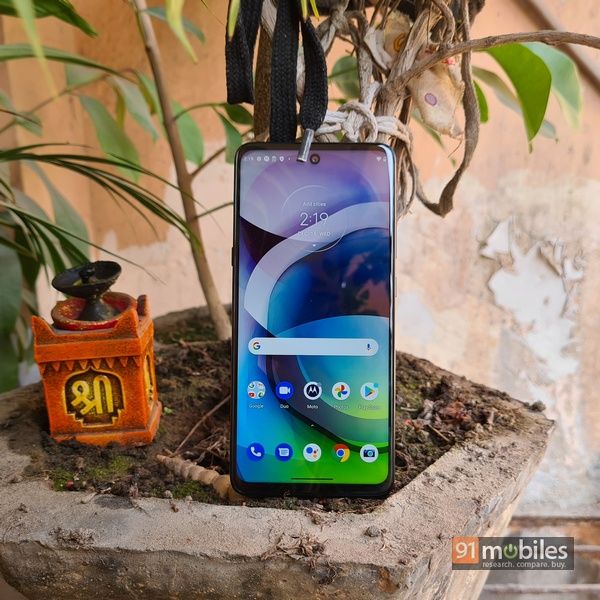
As I had mentioned before, the Moto G 5G’s claim to fame is that it’s the most affordable 5G phone on the market. However, your purchase decision shouldn’t rest solely on the phone’s communication capabilities. The Moto G 5G is a wholesome package with just the right ingredients to make for a worthwhile mid-range offering. It has a great chipset for its price, excellent cameras, and a reasonably good panel which offers a solid viewing experience. The thick and bland design is compensated with a nice in-hand feel of the polycarbonate body. Then there is of course a neat and clean Android experience on the device. Could there have been a higher refresh rate display? Yes, Could the charging speeds be higher? Of course. Could the punch-hole and bezels around the display be smaller? Yup. But none of these issues are potential deal breakers or hamper the smartphone experience in a significant way. The phone’s 5G capabilities could be a way of futureproofing when the next-gen communication arrives in the country.
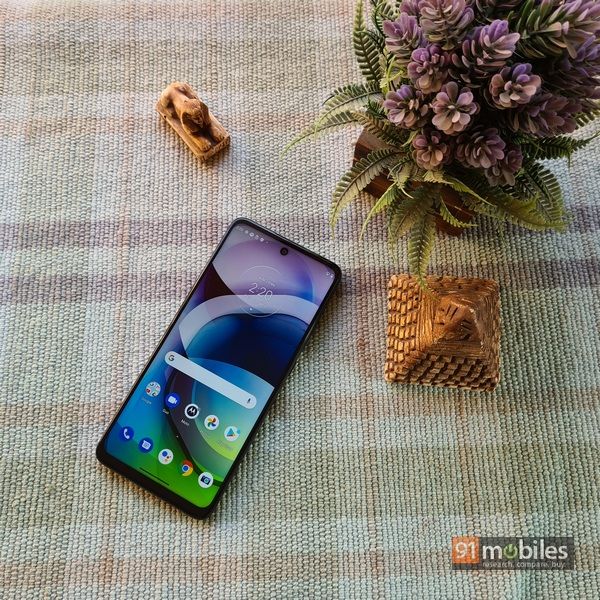
Looking at the competition, we have the Realme 7 Pro retailing for just under Rs 20,000. It has an excellent design, faster charging speeds, and a good AMOLED panel but lags in the performance, camera, and battery life. The OnePlus Nord, priced near the Rs 25,000 mark, offers better build quality and charging speeds. However, OnePlus’ controversial OxygenOS 11 moving away from its stock Android roots give Motorola an edge. People on a budget looking for a good performance-oriented phone with a nice camera experience, especially those who don’t mind the phone’s bland design should definitely go for the Moto G 5G.
Editor’s rating: 4 / 5
Pros
- Great performance
- Photography is quite good
- Clean software
- Battery life is decent
Cons
- Refresh rate could have been higher
- Design is not appealing
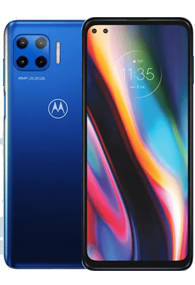
Comments
Post a Comment